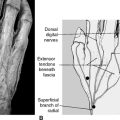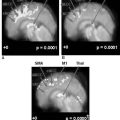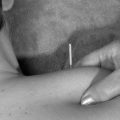CHAPTER 7 The Psychology of Acupuncture Therapy: Placebo and Nocebo Effects in Acupuncture Pain Management
OVERVIEW OF THE PSYCHOLOGICAL ASPECTS OF PAIN
The study of the psychology of pain is a rapidly growing field that has developed from behavioral and cognitive psychology. Its fundamental assumptions, although still neuroscientifically based, differ markedly from those of medical disciplines that are based on neurophysiology, such as neurology, psychiatry, and anesthesiology. Neurophysiology is concerned with biological organization and the chemical and physical laws that relate to the structure and function of the nervous system, whereas psychology is a complex of physiologic, cognitive, emotional, and social factors.
Cognition is a self-organizing process that gives coherence to an individual’s life and sense of self, extending across various external settings and through long periods of time.1 Cognition, for our immediate purposes, consists of the perception of events in the internal (bodily) and external environments, along with the higher-order rational processes of reasoning and decision making. An intensive dialogue between neurophysiology and cognitive psychology is needed to achieve the level of integration that the study of pain management requires, and such an integration will be a path toward better pain management.
Attention
Attention refers to the selective filtering of information from the internal and external environments.1 A pain patient cannot concentrate his or her attention on normal work and the ordinary routines of life because the pain frequently or constantly intrudes on awareness.
Imagery
Our sensory information always creates some sort of image; for example, thinking about a family member may draw the visual image of this person from the memory. Listening to an old melody may bring back an image of a past event. Awareness of pain is one of many types of psychological image that recall for us a kind of aversive experience associated with bodily injury, trauma, or inflammation. Pain as a personal image can be described as a mental representation of the actual sensory activity associated with an injurious external event.2
Schemata
A schema is a normally unconscious pattern of concepts, assumptions, images, affects, and associations that reflects a person’s experiences and influences his or her perception of the present and expectations for the future.3 Thinking of a university brings a host of associations for those who studied in a university environment: the campus, buildings, young students, professors, and laboratories, for example. This schema is formed by activating a learned network of associations. It does not bring to mind the focused image of a particular teacher in a particular class; rather, it is a nonspecific frame of reference that the brain has collected from many aspects of the personal background.
Some Pain Behaviors Seen in Acupuncture Clinics
Behavior 2
After one or two treatments, the patient usually feels much better and may regard the result of treatments as “miracles.” Acupuncture sometimes provides fast pain relief, especially in healthy patients who are experiencing acute symptoms (mostly group A patients, see Chapter 6). If this type of “miracle” appears in patients suffering from chronic pain, the practitioner should not be overly optimistic. Chronic pain represents a long-term pathologic change of tissues, such as sensitization of neurons in the spinal cord, and thus for chronic pain there is no quick fix. The “miracle” can be enhanced by psychological elements, such as expectation, strong personal willpower, distraction, and social factors such as family support.
Acupuncture is effective in relieving pain sensation, but healing takes time. The practitioner should understand the true nature of the healing process and work to prevent drastic psychological fluctuations so that the patient’s expectations will be realistic.
PLACEBO OR NOCEBO EFFECTS: PSYCHOLOGICALLY INDUCED SELF-HEALING OR SELF-DESTRUCTIVENESS
Currently placebo is defined as “an intervention that is designed to simulate medical therapy but is not believed to be a specific therapy for the target condition,” or “an inefficacious treatment believed efficacious at the time of use.” The placebo effect is also described as “a change in a patient’s illness attributable to the symbolic import of a treatment rather than its specific pharmacologic or physiologic properties.”4 A study showed that about 35% of postoperative patients reported marked pain relief after being given a placebo.5 This is a strikingly high proportion because morphine, even in large doses, relieves severe pain in only about 70% of patients.
The nocebo effect has been defined as “the causation of sickness (or death) by expectations of sickness (or death) and by associated emotional states.”6
Thus the outcome of acupuncture treatment depends on the following:
Box 7-1 Factors that Influence Acupuncture Efficacy
Placebo
Case 1: “Sham” Transcutaneous Electrical Nerve Stimulation Therapy
Despite the chronic nature of their pain (an average duration of 4 years), patients with back pain showed improvement in measurements of pain severity, pain frequency, and ability to function. On average the scores improved by 20% to 40% after sham (meaning in this case “unplugged”) transcutaneous electrical nerve stimulation (TENS) plus hot packs.7
Case 2: Mystery of the Drug Placebo Effect
Drs. Ronald Melzack and Patrick D. Wall cited a placebo case in their book The Challenge of Pain8:
A surprising recent discovery about placebos is that their effectiveness is always about 50% of that of the drug with which they are being compared, even in double-blind experiments.9 That is, if the drug is a mild analgesic such as aspirin, then the pain relief produced by the placebo is half that of the aspirin. If it is a powerful drug such as morphine, the placebo has greater pain-relieving properties, again about 50% of that of morphine. How is this possible?
Case 3: “Sham” Surgery
One classic double-blind, randomized study10 showed substantial and sustained improvement in angina pectoris after sham surgery (skin incision alone). In this study, 6 months after the operation, 63% of genuinely operated patients and 56% of falsely operated patients had substantial improvement. Benefits were not limited to decreased pain; they also included a reduction in drug use and increased tolerance of exercise.
In other more recent placebo experiments involving the effect of “sham” surgeries on lower back pain and osteoarthritis of the knee, the results showed exactly the same pattern as in this classic experiment.
Case 4: “Sham” Acupuncture
In classic acupuncture practice it is believed that “sham” acupoints cannot be effective. However, one study that used acupuncture for chronic pain concluded that needling sham points seemed to work for 33% to 50% of patients, whereas true points were effective in about 55% to 85% of cases. There was no statistical significance between the results for true and sham acupoints.11 The same study found another puzzle, that although sham acupuncture works in 33% to 50% of patients with chronic pain, it does not work at all in cases of acute laboratory-induced pain.
Analysis and explanation of these four placebo cases are provided in the next section.
Mechanism of the Placebo Effect
The remarkably powerful effect of a placebo in no way implies that a patient who responds to a placebo does not have a real medical problem. In Chapter 6 we discussed quantitative evaluation of patients. Based on the number of tender acupoints, we classified patients into four groups:
Case 3 is a comparison between true surgery and sham surgery. The results are not difficult to understand if one is familiar with acupuncture therapy. In China acupuncture is traditionally used with some success to treat cardiovascular problems, including angina pectoris, high blood pressure, and stroke. If the pathologic damage of angina pectoris is slight or mild, the stimulation of needling can relax the smooth muscle and myocardium through the mechanism of cutaneous-visceral reflex. Chinese doctors even invented a special procedure to implant foreign material like sheep gut into acupoint locations, especially on the arms, to prolong the effect of the cutaneous-visceral reflex. The skin incision functions like acupuncture-induced lesions (see Chapter 3). In case 3, therefore, the sham surgery in fact is not sham; rather the body’s self-healing mechanisms respond to stimulation produced by the sham surgery, which, like acupuncture, activates self-healing through stimulating sensory nerves in the area of the surgery. Such a response might equally have followed the use of acupuncture or possibly other modalities as well.
Case 4 is discussed in Chapters 3 and 4. Neurophysiologically there are no sham acupoints because acupuncture therapy is the central nervous system’s (CNS) response to stimulation of sensory nerves, and sensory nerves are distributed all over the human body, except in nails and hair. What are called true acupoints nevertheless provide more significant therapeutic results because they are located on the major nerve trunks. That is why true acupoints provide higher efficacy than sham acupoints.
Laboratory-induced pain is not the same as real clinical pain. Most clinical pain involves sensitized nerves, injured tissues, and inflammation, and as it persists it may change the physiologic homeostasis and the psychological integrity of the patient. Laboratory-induced pain is a type of localized sensory stimulation to which the brain tries constantly and rapidly to adjust. Soon the laboratory-induced pain is ignored by the brain like long exposure to a bad odor in a room. Thus psychologically and physiologically, persons with laboratory-induced pain are no different from pain-free persons. Nevertheless laboratory experiments provide the basic data for understanding pain mechanisms and the principles of pain management.
Placebo Responders
Some researchers have suggested that placebos are more effective for severe pain than for mild symptoms, and that the effect is stronger when patients are under great stress and anxiety. Experiments show that a reduction in anxiety may result in a partial reduction of the placebo effect.12 Thus the placebo effect is more powerful in people who have chronic generalized anxiety (personality-trait anxiety), although even in such people placebos are more effective when pain levels are high rather than low. Apart from trait anxiety levels, no consistent differences have been found to distinguish between placebo responders and nonresponders.
Placebo effects also vary according to the kind of pain. Most kinds of pain are relieved by placebo treatment in 35% of patients; however, as many as 52% of people suffering from headaches are helped by placebos. This may be due to the particularly strong role of anxiety in headache patients. Clearly the placebo effect is produced by suggestion, personality predispositions, and other psychological factors.13 However, practitioners should not be overly optimistic about placebo effects because patients tend to get less and less relief from repeated administration of placebos.
Clinical Inducement of Placebo Effects: Practitioner-Patient Interactions
Practitioner’s Attitude
The psychological interactions between the practitioner and patient may also enhance the effect of the treatment. Several studies have shown that placebo effects and the effects of treatment can interact. One study14 demonstrated that a standard dose of morphine was only 54% effective in placebo nonresponders, but was 95% effective in placebo responders. Clearly the drug effects are dramatically enhanced in persons who are fortunate enough to be placebo responders.
Nocebo Effects
As mentioned at the beginning of this chapter, nocebo effects have been defined as the cause of sickness (or death) by expectations of sickness (or death) and by associated emotional states.6 The following two cases show nocebo effects.
Case 1
Headaches were reported by 70% of college students who were told that a (nonexistent) electric current was being passed through their heads.15
Case 2
A double-blind study was designed to evaluate a method of testing for food allergies. The food substance was injected into the experimental group subjects, and the control group subjects were injected with a saline solution. Twenty-seven percent of those given the food substance and 24% of those given saline experienced symptoms of nose itching or watering, burning eyes, plugged ears, tight or scratchy throat, dizziness, sleepiness, and depression.16
SUMMARY
Self-healing potential, which varies from person to person, is a mechanism of biological survival. Without self-healing potential, no species or individual can survive. Self-healing capability can be suppressed by physiologic trauma and psychological disorganization. In some cases the pain or other persistent medical problems caused by psychological factors may play a major role in suppressing the self-healing process. If the psychological interference is cleared, the self-healing process will be recovered or accelerated.
1 Chapman CR, Turner JA. Psychological aspects of pain. In: Loeser JD, et al, editors. Bonica’s management of pain. Philadelphia: Lippincott Williams & Wilkins, 2001.
2 Hebb DO. Essay on mind. Hillsdale, NJ: Lawrence Erlbaum, 1980.
3 Williams JMG, et al. Cognitive psychology and emotional disorders, ed 2. Chichester, NY: Wiley, 1988.
4 Brody H. Placebo effect: an examination of Grunbaum’s definition. In: White L, Tursky B, Schwartz GE, editors. Placebo: theory research and mechanisms. New York: The Guilford Press, 1985.
5 Beecher HK. Measurement of subjective response. New York: Oxford University Press, 1959.
6 Hahn RA. The placebo phenomenon: scope and foundations. In: Harrington A, editor. The placebo effect: an interdisciplinary exploration. Cambridge, Mass: Harvard University Press, 1997.
7 Deyo RA, et al. A control trial of transcutaneous electrical nerve stimulation (TENS) and exercise for chronic low back pain. N Engl J Med. 1990;322:1627-1634.
8 Melzack R, Wall PD. The challenge of pain. London: Penguin Books, 1996.
9 Evans FJ. Expectancy, therapeutic instructions, and the placebo response. In: White L, Tursky B, Schwartz GE, editors. Placebo: theory research and mechanisms. New York: The Guilford Press, 1985.
10 Cobb LA, Thomas GI, Dillard DH, et al. An evaluation of internal-mammary-artery-ligation by a double-blind technique. N Engl J Med. 1959;260:1115-1118.
11 Vicent CA, Richardson PH. The evaluation of therapeutic acupuncture: concepts and methods. Pain. 1986;24:1-13.
12 McGlashan TH, Evans FJ, Orne MT. The nature of hypnotic analgesia and placebo response to experimental pain. Psychosom Med. 1969;31:227-246.
13 Gracely RH, Dubner R, Deeter WR, Wolskee PJ. Placebo and naloxone can alter postsurgical pain by separate mechanism. Nature. 1983;306:264-265.
14 Lasagna L, et al. A study of the placebo response. Am J Med. 1954;16:770-779.
15 Schweiger A, Parducci A. Nocebo: the psychologic induction of pain. Pavlov J Biol Sci. 1981;16:140-143.
16 Jewett DL, Fein G, Greenberg MH. A double-blind study of symptoms provocation to determine food sensitivity. N Engl J Med. 1990;336:542-545.






